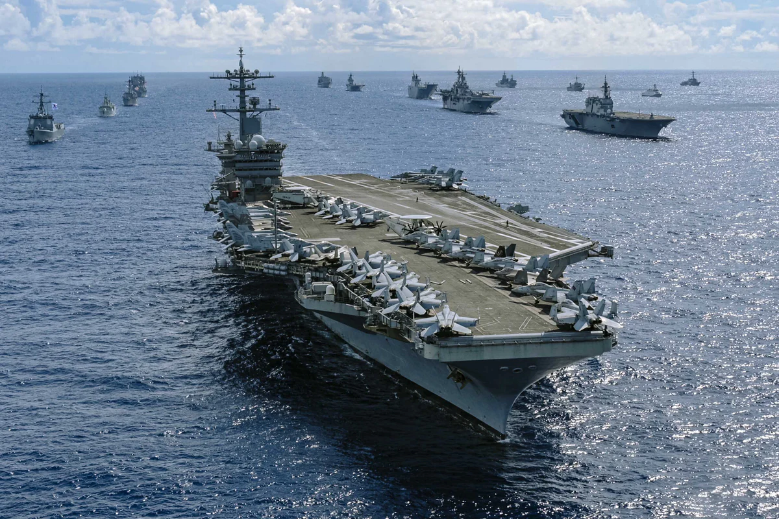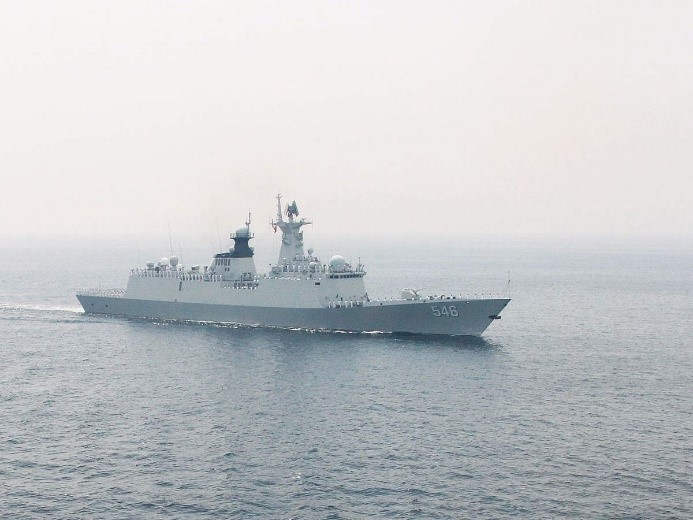By Ravi Srivastava
Sea Domination
Warfare of any form is a highly demanding and professionally challenging responsibility. There have been numerous wars and conflicts the world has witnessed, war is as old as probably human evolution, with changes in dynamics from survivability to aspirations. Modern militaries the world over aspire to master sophisticated technology and dominate with raw strength.
In analysis of almost every war, sea domination has formed one of the most essential parameters for success. The history of warfighting remains incomplete without understanding the contours of sea domination and especially the underwater dimension of the conflict. The havoc played by German U-Boats during both the World Wars is a folklore for submariners. The impact has such a resounding impression on major powers that it was felt an underwater combat arm is an indispensable force. The inherent ‘beyond the vision’ characteristics made submarines a real enigma which lets its ‘presence felt’ at the most crucial periods of combat to turn the tables.

Power Projection
The desire to dominate the global order got stronger at the end of the Cold War and the disintegration of the Soviet Union. The United States the only superpower left, quickly tried to fill the void by spreading its naval fleets across the globe. While out of seven United States naval fleets six are deployed across the globe comprising multiple platforms, its submarines formed the most crucial and feared asset of domination. An understanding of the capability of submarines can be gauged by the fact that today it is considered the most reliable component of a country’s nuclear triad. Its massive reach makes up for any range limitations of the missiles it may be carrying.
In its 2023 report, the Global Fire Power has highlighted the submarine fleet strength of major powers. China with 78, Russia with 70 and the US with 68 submarines respectively are the top three in the global order respectively. The underwater capability of a country has thus become a critical aspect of power projection. As the Chinese expansionist agenda continues in its neighborhood, where it is in active conflict with more than half of its neighbours. The same tendencies have been noticed in the operational conduct of PLA Navy. It is known to operate between five to eight navy units in the Indian Ocean region. It’s aggressive forays in the Indian ocean and the Arabian Sea to seize slightest opportunities has created challenging security situations.

Dual Challenge
The Indian Navy which has historically been the dominant force and a preferred partner for multilateral security arrangements in this region must be closely observing Chinese maneuvers. There are reasons to believe that China despite its aggressive push is finding it very difficult to hold on to waters, especially in the Indian Ocean and the Arabian Sea. The play has not exactly manifested the way the Chinese expected.
The Indian Navy, which is known to operate a sizeable fleet itself, also seems alive to this dual challenge, where on one hand it must counter hostile underwater assets around its vast maritime boundary running almost 7,500 km and on the other hand operate adequate assets of its own to have the right messages conveyed to its adversaries. Growing from a nascent beginning in 1967 when it first leased the B51 submarine from the Soviet Union later named INS Kalvari to the recent commissioning of the final of the six Kalvari class submarine INS Vagsheer, an indigenously built nuclear submarine, the Indian Navy has covered lot of sea.
Indian Navy has recently laid lot of stress for pushing its P75(I) project which will sharpen its teeth further. There however, remains much to accomplish for plugging certain gaps. Resource allocation and prioritization of requirement remains the limiting factor in such scenarios. India has continued to ramp up its presence and reach in this region which it rightly considered its own backwaters upsetting the Chinese numerical presence of the PLA Navy. India continues to further augment its newer capabilities with underwater assets.

Operational Flexibility
The Indian Navy continues to tail wherever Chinese ships were found floating in this region, with a 2.39 million square kilometer of vast national Exclusive Economic Zone to monitor, Indian Navy retains major operational flexibility. In the high sea India is part of international coordinated approach to counter piracy, illegal exploitation of ocean wealth and ensure globally accepted norms of freedom of navigation is maintained. It is these parameters where Chinese falter, in spite of its doling out huge money in the garb of BRI investments. Chinese have discovered resistance to replicate their economic presence into strategic influence. Much of the reason being their questionable intent and dubious record of handling international relations.
The emerging security scenario pose a definite challenge for the Indian Navy which realizes the folly of matching a ship for a ship. The Indian Navy today has rationally adopted an independent path of growth not only factoring dynamic security threats but also resource availability. It must also be complemented for leading innovation and indigenization at a good pace. Today the Indian Navy can take pride for leading among three services in the field of home-grown technology which has enlarged its basket of resources with considerable economisation on spendings and growing confidence to men who operate these machines.
The Indian Navy’s tradition of professionalism, deep combat experience and well-orchestrated deployment of assets will enable it to maintain the edge and greater acceptability as a resident power in the region. The Navy would continue to invest and explore in further niche underwater warfare domains like imaging, sensing & navigation; greater understanding of oceanography & hydrography; submarines equipped with Air Independent Propulsion (AIP) system; deep sea autonomous vessels and forge stronger operational bonds with littoral nations in the region as it confidently sails in the blue waters and maintain a future proof posture!
The writer is experienced in security and geopolitics, contributes to national publications and newspapers. His articles can be accessed on the popular blog site newsanalytics.co.in focusing on geo-strategic affairs.





